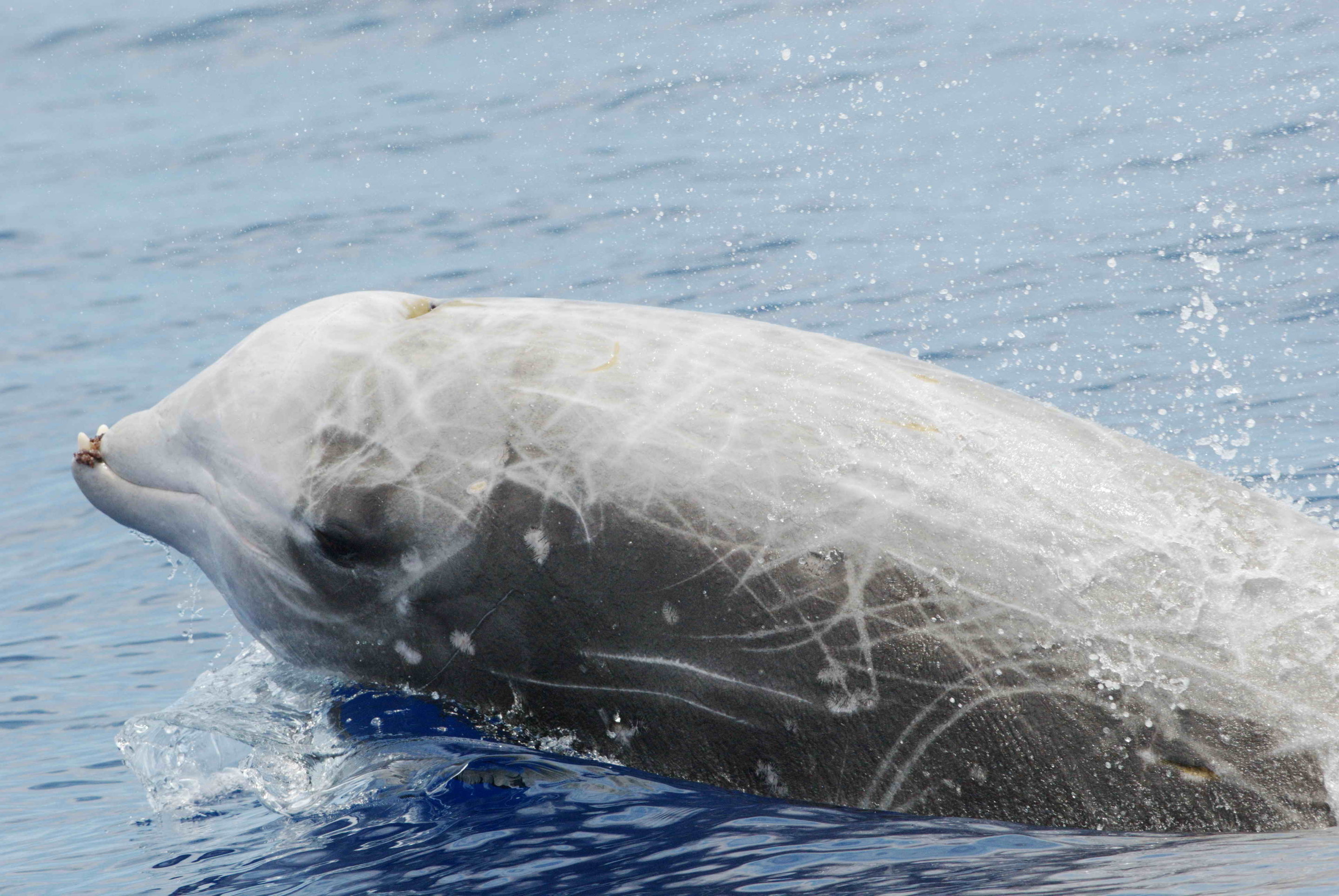Spade-Toothed Beaked Whale Biology

Spade toothed beaked whales – The spade-toothed beaked whale (Mesoplodon traversii) is a small species of beaked whale found in the Southern Hemisphere. It is one of the most poorly known species of beaked whale, and only a few specimens have been studied.
Physical Characteristics
The spade-toothed beaked whale is a small whale, with a maximum length of about 5.5 meters (18 feet) and a weight of about 1,000 kilograms (2,200 pounds). It has a long, slender body with a pointed snout and a small, spade-shaped dorsal fin. The spade-toothed beaked whale is also known for its distinctive teeth, which are long and pointed and can be up to 10 centimeters (4 inches) long.
Diet
The spade-toothed beaked whale is a deep-diving predator that feeds on a variety of fish, squid, and crustaceans. It is known to dive to depths of up to 1,000 meters (3,300 feet) in search of food.
Habitat
The spade-toothed beaked whale is found in the Southern Hemisphere, in waters that are at least 200 meters (660 feet) deep. It is most commonly found in the waters around New Zealand, but it has also been found in the waters around Australia, South Africa, and Chile.
Behavior
The spade-toothed beaked whale is a shy and elusive animal that is rarely seen by humans. It is known to be a social animal that lives in small groups of up to 10 individuals. The spade-toothed beaked whale is also known for its distinctive vocalizations, which are used to communicate with other members of its group.
Communication
The spade-toothed beaked whale uses a variety of vocalizations to communicate with other members of its group. These vocalizations include clicks, whistles, and pulsed calls. The spade-toothed beaked whale also uses body language to communicate, such as slapping its tail on the water or breaching the surface.
Social Structure, Spade toothed beaked whales
The spade-toothed beaked whale is a social animal that lives in small groups of up to 10 individuals. These groups are typically made up of related individuals, such as a mother and her calves or a group of siblings. The spade-toothed beaked whale is also known to form temporary associations with other groups of whales, such as bottlenose dolphins or common dolphins.
Conservation and Threats: Spade Toothed Beaked Whales

Spade-toothed beaked whales face significant conservation challenges. They have a limited global population and are vulnerable to various threats. Let’s delve into their conservation status and the efforts being made to protect them.
Conservation Status
The spade-toothed beaked whale is classified as “Data Deficient” by the International Union for Conservation of Nature (IUCN). This means that there is not enough information available to assess their population status accurately. However, based on available data, they are believed to be relatively rare and have a restricted distribution.
Threats
The primary threats to spade-toothed beaked whales include:
- Bycatch: They are often accidentally caught in fishing nets, particularly in deep-sea fisheries targeting species like tuna and swordfish.
- Habitat Loss: Their preferred deep-sea habitats are increasingly threatened by human activities such as oil and gas exploration, underwater noise pollution, and climate change.
Conservation Efforts
Conservation efforts for spade-toothed beaked whales are ongoing, although limited by the lack of comprehensive data. These efforts include:
- Research and Monitoring: Scientists are conducting research to better understand the population size, distribution, and behavior of spade-toothed beaked whales. This information is crucial for developing effective conservation measures.
- Bycatch Mitigation: Measures are being implemented to reduce bycatch, such as using acoustic deterrents and modified fishing gear.
- Habitat Protection: Efforts are underway to establish marine protected areas in their preferred habitats, safeguarding them from harmful human activities.
Despite these efforts, the conservation status of spade-toothed beaked whales remains uncertain. Further research and continued conservation initiatives are essential to ensure their long-term survival.
Spade-toothed beaked whales are fascinating creatures, known for their distinctive teeth and elusive nature. Their ability to dive deep into the ocean is quite remarkable, similar to the Detroit Lions , who dive deep into the football field, determined to conquer their opponents.
These whales are also highly intelligent, making them one of the most intriguing species in the ocean.
Spade-toothed beaked whales are fascinating creatures that live in deep waters. They have a unique ability to dive to great depths and hold their breath for extended periods. Speaking of holding their breath, have you heard about the epic match between espana vs inglaterra ?
It was a nail-biter, with both teams fighting tooth and nail. Just like the spade-toothed beaked whales’ resilience in the deep sea, the players on both sides showed incredible determination and grit.